How to Define Your Target Audience
Why spend the time to define your target audience? The number one reason is ROI. By serving advertisements to interested customers, you’re getting more out of your marketing spend.
Increase Revenue by Knowing Your Customer
The decisions your business makes should be heavily based on your target audience. It’s important to define this early and continually assess and adjust strategy based on changes.
What Does Target Audience Mean?

Your target audience is simply the people that your products or services are made for. Who wants to give you money? That’s the real question you’re trying to answer.
This includes gender, age, location, interests, and other key factors that help determine if that particular person would be interested in your company.
You wouldn’t want to serve an ad about skydiving to an 80-year-old lady living in rural Nebraska. Or maybe you would? How do you even know?
When it comes to marketing, you don’t want to assume what you know, because that’s a waste of dollars. Which doesn’t make sense. Instead, rely on data about your existing customers to define your target audience.
What if you’re just starting out? Don’t worry, we’ll address that in the section about competitor analysis.
Steps to Identify Your Target Audience
I look at audience definition as a three-step process:
- Internal examination – review what your business offers
- Competitor analysis – what audience does your competition reach?
- Ongoing research – create audience segments and perform frequent audits
Let’s walk through each step in more detail so the process can start coming together for you.
Review What Your Business Offers
In order to determine the audience you are trying to reach, you need to fully understand your own business. I’m not talking about the inner workings per say, but what does your company provide? And who would generally want it? This goes for services or products.

If you own a car wash, you’ll want to target car owners and responsible ones at that. Whereas, if you own a wedding venue, your audience would be couples who got recently engaged.
Ask yourself some questions:
- Does your business sell a product, offer a service, or both?
- What existing data do you have on your past customers?
- How can you gather more information from the existing customer base?
- Are there any notable trends in your industry, seasonal or otherwise?
- Do you offer any discounts for specific demographics, military, elderly, etc.?
By getting a better hold on WHY your business even exists and WHAT makes people want to visit, you’ll understand WHO you should be marketing to.
What Audience Does Your Competition Reach?

This step is especially crucial for companies just starting out since there is no existing internal data to draw from. If you want a head start so to speak, do some extensive research on a few of your closest competitors.
Who are they marketing to? How do you find out? A key indicator will be the imagery used in the advertising. If there is a human element involved, what do they look like? Might be able to pull some clues such as age or gender.
Now just because you pulled info from one ad does not mean that’s it, you’ll want to review as much of their advertising as possible. If it’s accessible (and a lot is available online) look at past advertising as well to see what they’re no longer doing.
Do this across as many competitors as you can, at least your closest ones, and you’ll have an idea of what seems to be working and things to avoid.
Create Audience Segments and Perform Frequent Audits
Depending on the specific product a potential customer is interested in; they may fall into a different segment of your target audience. If your services or product are limited, your audience segmentation will likely be small.
Larger offerings may include a vacuum cleaner and spark plugs in the same catalog, but that doesn’t mean the same people are shopping for those two completely different products. If you’re selling a wide variety of products, you’ll want to highly segment your audiences based on the potential product grouping.
A limited catalog likely means fewer audience segments on a product level as your item diversity is lower. Segmenting audience groups to determine what grouping performs best is a worthy time investment. Consider breakdowns such as age, gender, or location demographics to help pinpoint success.
Start Marketing to Your New Audience
Now that you’re target audience and segments are defined, it’s time to start serving content that should land particularly well with these consumers.

Creating imagery and copy specific to your segments will provide success and failure data to further define your marketing strategy.
Review Analytics to Continue Defining Your Audience
With each new campaign that you run, take time and review the data after completion. You’ll continue defining your audience based on this information. It may feel like you’re throwing money at the start (after I’ve been saying this process will SAVE you money), but it’s just the discovery stage where you’re learning what works and what doesn’t.
You’re going to have successes and failures, it’s a part of life. Don’t act too quickly if you feel something isn’t working, your research will pay off if you give the data time.
But if you’re still having trouble defining an audience on your own, give us a call and we’ll get your marketing headed in the right direction.




